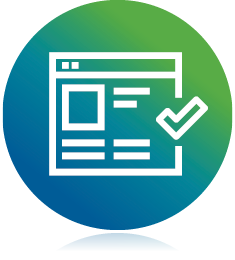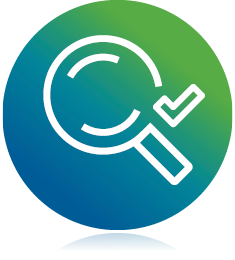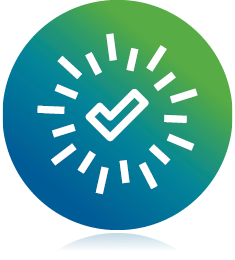
Renewing a diploma or certificate program
Explore the stages involved in renewing a diploma or certificate program at Georgian, including re-evaluating curriculums, seeking relevant approvals, notifying interested and affected parties and beginning the instructional design of the program.
What you need to know
Diploma and certificate programs must be renewed at least every five years, and adhere to the curriculum standards of Georgian College, the Credential Validation Services (CVS) and Ministry of Training, Colleges and Universities (MTCU). As such, there are a number of steps involved in conducting a formal five-year program renewal.
1. Preparing for program renewal
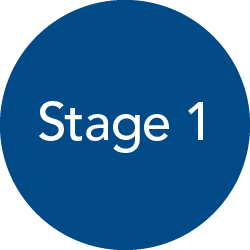
Before the work of program renewal begins, there is some necessary preparation that must be completed by the dean/associate dean.
Program renewal depends upon a team of academic experts working collaboratively. This team, assembled by the dean/associate dean, includes the dean/associate dean, the renewal faculty lead (often the program co-ordinator), faculty experts in the area, and a member of the Office of Academic Quality (OAQ). The team should meet weekly or bi-weekly for the duration of the project.
The project renewal team also works closely with internal and external interested and affected parties during different stages of the process. Examples include:
- Program Advisory Committee (PAC)
- industry partners
- graduates and students
- Office of the Registrar (RO)
- Co-op Education and Career Success
- Liberal Arts
- Library Commons
- Information Technology
For a complete list of interested and affected parties, refer to the Integrated Planning and Stakeholder Consultation chart.
Once the program teams are assembled, they will be notified about attending the program renewal launch meeting. The manager, curriculum processes, faculty curriculum advisor, and the program renewal team meet to discuss the key stages of the process, curricular mapping sessions, resources to support renewal work, and to establish a work-back plan based on the Academic Council (AC) program renewal approval meeting date. Also in attendance are the Indigenization co-ordinator and/or manager, who will work with the team throughout the process to find opportunities for integrating Indigenous content and outcomes into the renewed curriculum.
2. Curriculum renewal
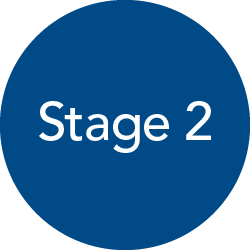
In stage two of the program renewal process, the academic area ensures the college is continuing to deliver the quality of education necessary for student and program success. The academic area is responsible for re-evaluating and renewing the program curriculum.
To begin the curriculum re-design, program teams need to conduct an analysis of the existing program. Lead by a member of the OAQ, teams will reflect on the current program in terms of what is working, what needs improvement, what might be missing, and what might be superfluous. When analyzing the success of an existing program, teams will consider the following:
- Ontario Qualifications Framework
- program assessment reports
- previous program renewal documents
- student feedback
- accreditation reports and commitments
- relevant pathway agreements
- potential pathways between credentials
- institutional learning outcomes
- program differentiation
- alignment with college mission, vision and strategic values
Program teams may choose to analyze the program in a small group or include additional program faculty or other interested and affected parties.
Consultation with key internal and external parties is also an essential part of program renewal and takes place at various stages throughout the process. The PAC, made up of industry advisors, for example, provides subject matter expertise and knowledge of the employment landscape that will help ensure the program is current and relevant to future employment and academic pathways. Regulatory bodies are consulted regarding changes to external requirements.
Internally, the RO confirms how these changes impact admission requirements and helps to resolve any issues around how changes to the structure of a program may impact funding, student fees, academic space and scheduling. Other interested and affected parties from across the college should be consulted on an as needed basis. Examples include the following:
- graduates and students
- Credit for Prior Learning
- Co-op Education and Career Success
- Physical Resources
- Institutional priority areas, such as Indigenous Studies; Equity, Diversity, Inclusion and Belonging; Entrepreneurship and Sustainability
- international recruitment
- academic areas
- Library Commons
- Information Technology
When changes to a program during renewal affect the program costing, the Capacity Assessment Committee (CAC) must be convened and consulted. This committee includes representatives from a range of internal areas critical to determine the college’s capacity to deliver programs (see program costing and capacity assessment below).
For a list of complete interested and affected parties, refer to the Integrated Planning and Consultation process.
The MTCU code and related Provincial Program Standard or Description provide the foundation of all programs of instruction at the college, including Title, Vocational Learning Outcomes (VLOs), Essential Employability Skills (EES) and General Education (GNED) requirements, as well as requirements such as program duration and funding. When renewing a program, it is important that teams identify whether they are working in the correct MTCU code, and from a Provincial Program Standard or a Provincial Program Description. The ways in which titles, VLOs are used are based on this distinction, as dictated by the Ontario Colleges Quality Assurance Service (OCQAS), the body that oversees the Credentials Validation Service (CVS), and the College Quality Assurance Audit Process (CQAAP).
When considering the title of a program, it is necessary that teams adhere to the Titling Protocols established by the CVS. In brief, these protocols were designed to ensure that program titles are:
- consistent across the college system
- describe of the field of study (not the delivery mode or occupation)
- uphold truth in advertising
Refer to the CVS Titling Protocols document for the complete protocols with explanation, and contact the OAQ for support.
The Program Outline includes essential information about an academic program, including program learning outcomes, courses, admission requirements, graduation requirements, student progression and more. This document serves the needs of students, faculty, administrators and external approval bodies.
The Program Tracking illustrates the sequencing of courses as students take them from semester one through to graduation. Pop-up bubbles linked to the course codes are used within the tracking to provide essential information, including the course description, hours, requisites, and Prior Learning Assessment eligibility. In this section, teams also identify whether or not work-integrated learning in the program exists to meet the requirements of a professional or occupational regulatory body.
The program tracking is completed within the Curriculum Information Management (CIM) system requires some training. Refer to the CIM section of our website for further information.
Course outlines for a program renewal need to be drafted or revised (where necessary), and approved by the dean or associate dean within the CIM system prior to the program curriculum approval at AC. The course proposal form in CIM provides instruction regarding all of the essential components via help bubbles: title, hours, semester offered, delivery method, requisites and equivalents, the course description, course learning outcomes, course content, and course evaluation.
Course outlines are finalized in the system once the revised program outline is approved at AC during stage three.
Please contact the OAQ for curriculum coaching and resources. The Centre for Teaching and Learning (CTL) will provide support with assessment and instructional design, once the program curriculum is approved.
There are numerous ways to map the curriculum of a program. Maps are useful in creating a picture of your program from a particular angle, and the type of map you use is dependent upon your goal. Elements of mapping might include program and course learning outcomes, assessment, and accreditation requirements, to name a few.
Mapping requirements for program renewal include Vocational Learning Outcome Mapping and Detailed Curriculum Mapping.
Vocational Learning Outcome Mapping
Vocational Learning Outcome (VLO) Mapping is a requirement of the Ontario Colleges Quality Assurance Service (OCQAS), and is used to ensure that programs are developed from VLOs and Essential Employability Skills (EES). Program teams will map proposed Program Learning Outcomes (PLOs) to Provincial VLOs, and individual courses to both PLOs and EES. At the same time, if proposed PLOs differ from the VLOs, teams are required to justify the difference. This VLO mapping and justification is validated informally by CVS before the program changes are approved internally by AC.
Detailed Curriculum Mapping
The Detailed Curriculum Map enables faculty to map every Course Learning Outcome (CLO) to each Program Learning Outcome (PLO) and Essential Employability Skill (ESS), as well as to institutional priorities such as entrepreneurship and Indigenization. In a grid layout, faculty also identify when each CLO is Taught for the first time (T), Reinforced (R), and/or Assessed (A) in each course.
Curriculum mapping helps faculty to conceptualize the “big picture” in the sequence of course learning concepts and see how the pieces of the curriculum fit together. It helps faculty identify gaps in the intended learning and provides opportunity to re-think course sequencing. Course mapping also helps the college illustrate its adherence to ministry guidelines that program PLOs, courses, lessons and evaluation stem from the provincial VLOs.
Because a program renewal can have budgetary implications, the dean/associate dean is responsible for reviewing the existing Program Costing and modifying it to reflect any changes. Be sure to review and update the following:
- program review costs
- program delivery costings (including online development, specialized space, specialized IT requirements, capital and specialized equipment)
- altered staffing plan
- changes to Library Commons and learning resource requirements
- Return on Investment (ROI) analysis
The business manager of the academic area must consult with Financial Planning to review and approve the new Program Costing for the program renewal. At this time, it may be identified that the resource requirements resulting from the renewal are significant. In this case, the CAC is convened to conduct a full evaluation of the resource requirements. Approval of both the revised Program Costing and the Capacity Assessment must be received before the program renewal can be submitted to AC for approval.
The final documentation required for approval is the Program Renewal Summary, a section of the program form in CIM, which is used to collate the review findings and summarize recommendations for program changes. It provides readers with an overview of the program prior to changes, goals for the program moving forward, and details on the plans to achieve these goals.
3. Approval process
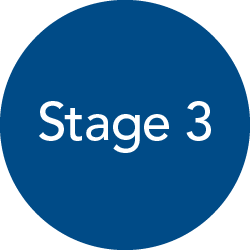
The dean/associate dean is responsible for approving the revised Program Outline, program mapping, program tracking, and Program Renewal Summary within the CIM system on behalf of the academic area.
At this point, the program renewal is submitted to AC for approval.
The dean/associate dean or program renewal faculty lead submits the completed renewal proposal to the OAQ at least three weeks in advance of the scheduled AC meeting via CIM. This gives the OAQ time to review the documents to ensure they meet Ministry and curriculum system requirements. If anything needs clarification, the proposal may be rolled back through CIM to the academic area for revision. The proposal can then be resubmitted through CIM and distributed to the members of AC no later than one week prior to the meeting.
The dean/associate dean and faculty lead present the renewal at AC for discussion and approval. If there are any concerns, the team may have to revise the documentation and resubmit for approval at the following AC meeting. If there are no concerns, AC approves the updated program documentation.
Some types of program changes, including significant changes to program hours or learning outcomes (plus or minus 25 per cent), program title, or program duration must be submitted formally as program modifications to CVS and the MCU for approval by the OAQ.
Once the relevant approvals are received, the OAQ finalizes the new program information in CIM and triggers notifications to all relevant parties.
Course development and instructional design should continue.
4. Final notifications
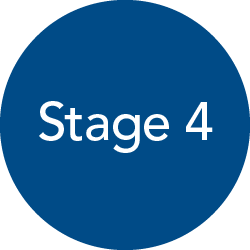
Once the internal and external approvals have been obtained, it’s time to begin notifying interested and affected parties in a timely manner.
Accurate, consistent, and timely information is required well in advance of a renewed program launch in order to attract students to the college through high school visits, college open houses, employers, the college viewbook, Georgian’s website, and promotion on the Ontario College Application Service (OCAS) website. The information is also necessary for the college to:
- establish tuition and program ancillary fees
- register students
- schedule classes and assign space
- enable students to plan their educational paths to graduation
- allow students to select their courses by semester
- determine graduation eligibility
Upon AC approval (or MTCU approval where relevant), the following steps occur:
- Immediately: OAQ notifies the RO; the dean/associate dean, program renewal faculty lead, program assistant, and academic officer of the relevant academic area; Finance and Corporate Services; Marketing, Communications and Recruitment; and Co-op Education and Career Success (if relevant) via the CIM system.
- June: OAQ submits the program information to Marketing, Communications and Recruitment for inclusion in the college viewbook.
- September: RO provides the information to the OCAS for promotion on its website: ontariocolleges.ca.
- September of the following year: The revised curriculum is launched.
5. Program delivery
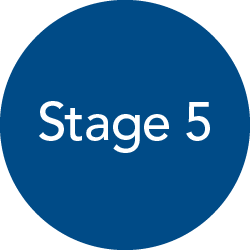
At this stage, program curriculum teams focus on the instructional design of the program, including assessment development, lesson planning, and syllabi preparation.
When doing so, keep in mind the following:
- purpose and goals of the course within the context of the revised program
- sequence of learning, assessment, instructional methods and resources
- continuous quality assessment and improvement plans
- accessibility and inclusivity (e.g., that students with disabilities and from all backgrounds can participate with an equal chance of success)
Remember, all assessments and class instruction must stem from the CLOs. and consequently, the PLOs, in the Program Outline. As such, the detailed curriculum map should be referred to regularly, to ensure that course delivery connects to the overall program goals.
Please contact the CTL for support with instructional design.
Questions?
Contact the OAQ team
We can provide a number of resources with regard to curriculum development and design, and work with program teams on curriculum development.
We’re here to assist with answers to questions about the Curriculum Information Management system (CIM), approvals, deadlines and more.
Send us an email:
academicquality@georgiancollege.ca
